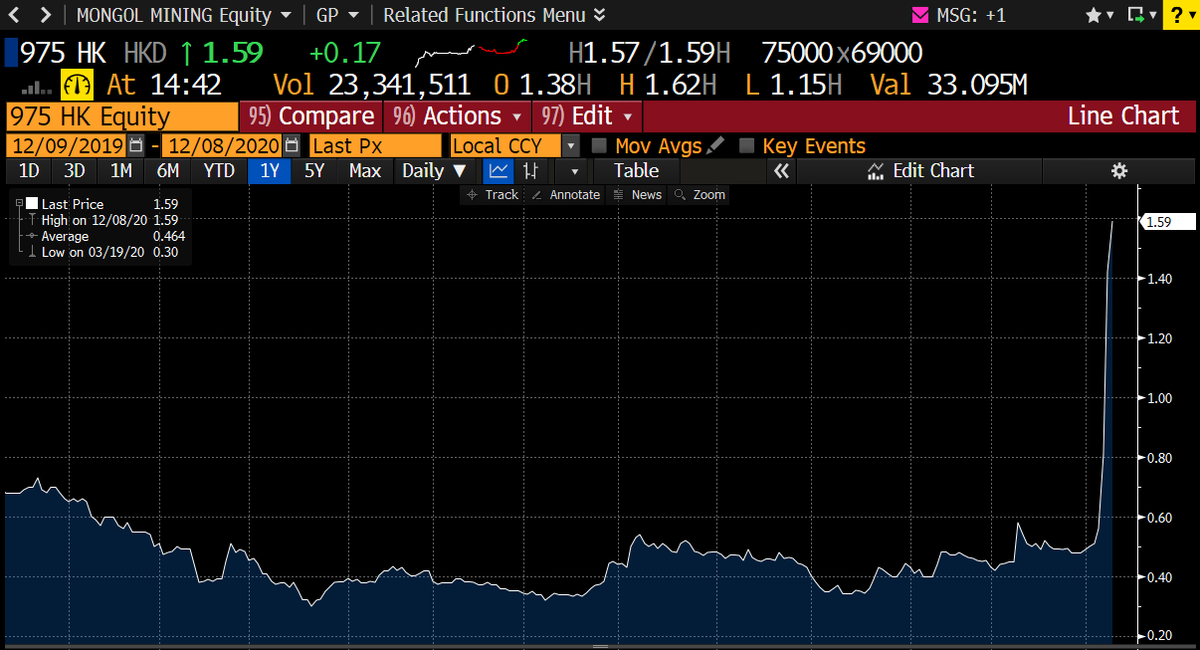
Value investing seems to suddenly be back in vogue, and the old saying "good things happen to cheap stocks" starting to work again. When you trade at half of one times earnings (albeit with lots of risks, leverage etc etc..), sometimes your stock can go up 4x in a few days. 

Extrapolation and momentum work until they don't. Value traps are value traps until they aren't. The outlook is bleak and dire until suddenly it isn't. Stocks lack a catalyst until one arrives.
I've talked about this many times in past - if you bought this stock you've looked wrong and underperformed virtually every day until 3-4 trading days ago. Greenblatt has talked about how best performing managers over a decade spend 3yrs in worst performance DECILE. This is why.
People also say, why own more than 10-15 stocks? Why not only your best ideas? Mongolian Mining was about my 120th best idea (I have 185 stocks in portfolio). I had 30-40bp. It just made more than 1% for the fund in 4 days. Predicting which ideas work best and when is very hard.
Stocks like MM are impossible to concentrate into, because there is a lot of uncertainty and a decent chance of a zero. If you concentrate and focus only on your 'best ideas' you will never own stocks like MM. But they can have great risk/rewards if you diversify & are patient.
The best way to think about these sorts of stocks is like you're buying a long dated call option on a few things unexpectedly going right, that only expires if the company goes bankrupt/dilutes you to irrelevance. 30bp is an appropriate position size for such option positions.
• • •
Missing some Tweet in this thread? You can try to
force a refresh


